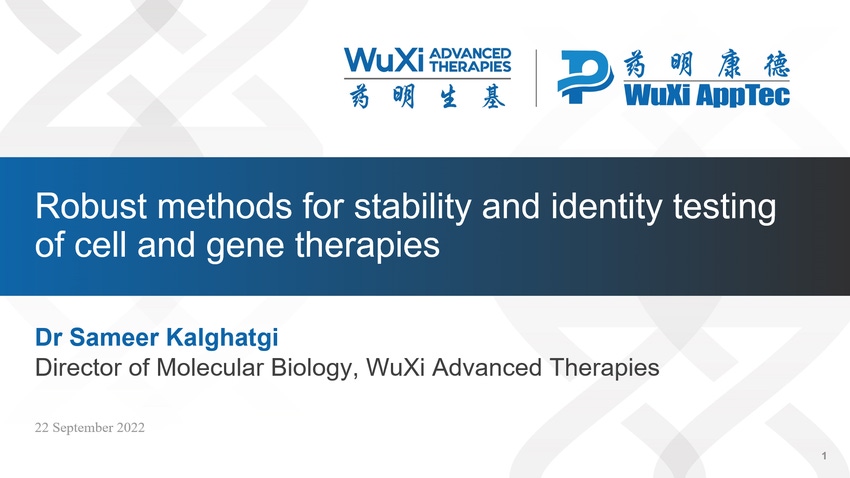- Sponsored Content
- Manufacturing
Robust Methods for Stability and Identity Testing of Cell and Gene Therapies
September 22, 2022

Date: Sep 22, 2022
Duration: 20 Min
Sponsored by Oxgene, Wuxi ATU
This webcast features: Sameer Kalghatgi, PhD, Director of Molecular Biology, WuXi Advanced Therapies.
Genetic stability and identity testing are necessary for novel cell and gene therapies to achieve regulatory approval. Sanger Sequencing, human cell line identification using short tandem repeats (STRs) and next generation sequencing (NGS), are important tools for identity and stability testing but must be implemented in a reproducible way.
For regulatory approval, the identity and stability of transfected DNA inserts must be confirmed. Sanger Sequencing is widely used for this purpose, and also to confirm NGS results of hard to sequence regions like homopolymer repeats.
STR analysis is used to authenticate if cell lines are of human origin and to verify the identity of cell lines used in viral vector manufacture.
Finally, high-throughput NGS testing can either be used for whole genome sequencing of client specific lentiviral and AAV vectors or to identify cell lines using targeted sequencing.
Key Takeaways:
Considerations when planning the genetic stability and identity testing for a novel cell or gene therapy.
How these methods work and the type of samples on which they can be performed.
WuXi Advanced Therapies’ approach to Sanger Sequencing, human cell line identification and NGS, and how we apply our proprietary protocols to support customers through the complex testing process.
Just fill out the form below to view the recorded webcast now.
About the Author(s)
You May Also Like





